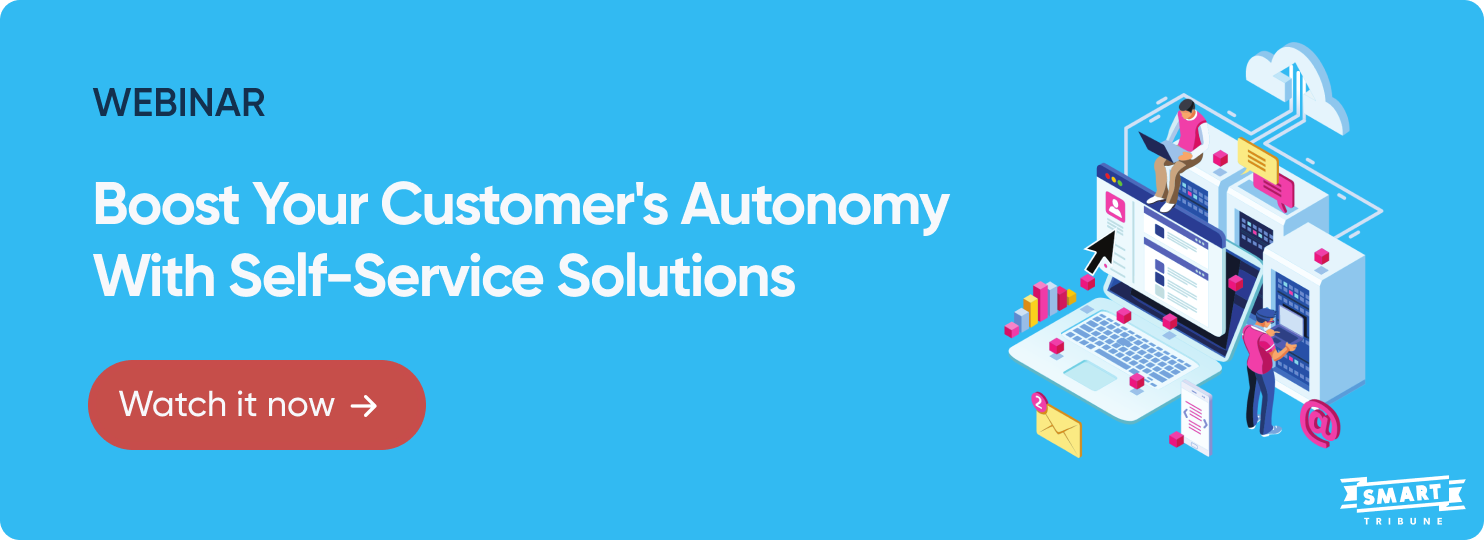What Are Some Ways That You Can Continue to Advocate for the Clients That We Serve
Businesses depend on their customers to succeed. There's no arguing with that whatsoever. Unfortunately, not every business is customer-centric at its very core. This is a sorely missed opportunity. For one, businesses that lean into their customers as an extension of their marketing, sales, and customer service teams only stand to reap the benefits that come with transforming them from "purchasers" (of your products or services) to true brand ambassadors who are ready and willing to sing your praises at all times. By making your customers your brand's biggest champions and cheerleaders, you'll not only have a leg up on the competition—as loyal customers don't often stray—but also will be able to funnel all of that love into creating a better overall customer experience that leads to happy customers over and over again. Here we'll explain what customer advocacy is and why it's so important for your business. Wikipedia defines customer advocacy as a "specialized form of customer service in which companies focus on what is deemed to be best for the customer. It is a change in a company's culture that is supported by customer-focused customer service and marketing techniques." But what does all of that technically mean? We're glad you asked. Customer advocacy is basically what happens when you put your customers' wants, needs, and expectations first—in all of your business decision-making, beyond marketing or customer service alone. When you do this, you have a much greater chance of creating happy customers who eventually become your biggest cheerleaders. Some companies call them brand advocates or brand ambassadors. Either way, they are simply your most loyal customers. Here's why customer advocacy is so important. Mind you, customer loyalty doesn't just happen overnight. It's actually a rather drawn-out process that begins with the very first interaction a customer has with your brand. If that initial customer experience is a good one, then it likely ends with a customer making a purchase, signing up to receive emails, following your brand on social media, and so on. The key here is to get a customer to make a transaction of some sort, as that is absolutely essential in getting them one step closer to building a relationship with a brand. Obviously, if that first interaction wasn't a positive one, then you probably lost a customer right off the bat—which is an entirely separate beast that we won't tackle in this article. Our focus here is on happy customers and how they can be a lever for your business's long-term success. Now, back to our happy customers. Once they've made a transaction, it's now up to you—the brand—to surprise and delight them at every turn. A big part of this involves ensuring that your product or service, in other words, whatever they've purchased from you, meets (and hopefully) exceeds their expectations. Ideally, if you've satisfied them enough to get them to make a repeat purchase, you're well on your way to earning a loyal customer for life. Just keep in mind that a positive experience with a product or service is merely one part of the path-to-customer advocacy equation. Every aspect of the customer experience, from your brand's website to social media to email communications—and pretty much anything else you do to engage with customers in a one-to-one or one-to-many way—will shape their perceptions of your brand. The more you can do to make that total experience feel personally relevant to them, the more likely your brand will rank high in their favorites. Many companies don't leave customer advocacy to chance. Nor should they because building customer advocates is something that requires a bit of nurturing. This has given rise to customer advocacy strategies, like customer loyalty programs, that seek to formalize the relationship between brands and their customers. In a nutshell, a successful customer advocacy program is built on the following components: Now that we've provided a high-level overview of what customer advocacy is, why it's important, and how to build an effective customer loyalty program, let's take a closer look at why mounting an army of brand advocates not only makes good business sense but also is the key to creating a better overall customer experience—for all of your customers. Let's start by stating the obvious. Customer advocacy is basically the logical extension of customer loyalty. You can't really have one without the other. What a customer advocacy program does, however, is amplify existing brand loyalty by giving customers even more reasons to not want to potentially flirt with the nearest competitor. Building a more formal, mutually beneficial relationship with customers is the key to making brand loyalty feel like an authentic part of your brand's end-to-end customer experience. This helps explain why Forrester found that, on average, customer advocates are far more loyal than non-advocates. This goes hand-in-hand with the point above. After all, loyal customers are bound to stick around for the long haul and not deflect over to the competition. Because customer advocacy is all about giving customers more reasons to be loyal to brands, it only makes sense that it also doubles as a tried-and-true customer retention tactic. And although customer retention is, more or less, a synonym for customer loyalty, the truth is, it plays more into the "bottom line" economics of customer loyalty. In other words, the biggest business benefit here is that the longer customers remain loyal, the greater their lifetime value to your brand will be. You might start noticing a trend here. When customers are loyal, they tend to come back and make ongoing or, in this subscription-focused era, recurring purchases. But it has also been found that customer advocates often spend twice as much as non-advocates—and also tend to purchase more often, making them up to five times more valuable than the average customer. Additionally, simply increasing your customer advocacy efforts by 12% can double your brand's revenue growth. Why? Because brand loyalists have the power and influence to create a network effect that brings in new customers organically who are ready to spend on your brand. Customer loyalty and customer satisfaction are essentially two sides of the customer advocacy sword. Brand advocates are loyal because you, as a brand, have done something to make them happy. Whether they love your products and services or had a stellar customer service interaction—and pretty much anything in between—you've been able to satisfy their wants, needs, and expectations in some way. Now, here's the icing on the cake: Customer advocacy creates a space for driving even greater levels of customer satisfaction simply by giving your customers more ways to positively promote and engage with your brand. And this quickly becomes a virtuous circle because the more satisfied they are—or rather, the more you're able to continue surprising and delighting them—the more of an advocate they'll be down the road. As you've heard many times before, retaining a loyal customer is a lot more cost-effective than acquiring a new customer—much less during times like these when CPCs and CPAs are higher than ever because it's harder to break through the noise and capture the attention of your target customers. Therefore, by making customer advocacy a cornerstone of your customer nurture strategy, you essentially transform these brand advocates into an extension of your sales team and, as a result, create an organic new customer acquisition pipeline. Knowing that customer advocates are often two to three times more effective at persuading others to make a purchase (versus their non-advocate counterparts) through word-of-mouth promotions, you'd be silly not to lean on them to bring new customers into the fold. Plus, if you needed more convincing, it's also been found that 76% of people say they are more likely to trust content shared by "normal people" than what's shared directly by brands themselves. So if you're reading between the lines, this is basically free customer acquisition. Speaking of new customer acquisition, one of the biggest barriers of entry for any customer when it comes to trying out a new brand is simply knowing that the brand exists in the first place. This is where customer advocates can really come in handy. Not only do they spread the word more often about the brands they love, but Nielsen has also found that the people who trust and respect their recommendations are four times more likely to buy based on a referral. So while customer advocates are great influencers who have the ability to drive brand awareness, as noted above, they are equally strong at closing sales, albeit indirectly. As mentioned earlier, a well-thought customer advocacy program opens up the door to gleaning useful insights from customers that can help you shape, evolve, and improve both your products and services as well as the overall customer experience. Because customer advocacy is all about creating a more open and ongoing dialogue with customers—in other words, building strong customer relationships—it's an opportunity for brands to get a pulse on customer needs well before issues boil over. But we can't stress it enough that should you decide to embrace customer input and feedback with open arms, you need to have a plan in place to take action on it—and communicate your action plan out to customers accordingly. If you operate an on-domain customer community or have a vibrant social media presence—especially on channels like Facebook Groups—you can empower your customer advocates to help and support other customers who aren't as "in the know" as they are. Doing so can, in many ways, make them an extension of your customer service team by giving them the authority to respond to other customer questions or issues via community forums. As an added plus, this has the potential to create a "domino effect" of customer advocacy because the more other rank-and-file customers see "super users," for lack of a better word, support the broader customer community, the more they will aspire to reach that same level of customer advocacy. In other words, customer advocates model the behaviors that they'd like to see in other customers and, as a result, become catalysts for a new wave of customer advocates. Creating amazing customer experiences across the entire customer journey should be the number one priority for all brands today. This is the key to long-term customer advocacy. And while there are a lot of different ways to create a better, more engaging end-to-end customer experience, one winning approach is to implement customer self-service solutions on your site. Whether you decide to deploy a comprehensive knowledge base, dynamic FAQ, intelligent chatbot, or in-context help widget—or all of the above—putting more and better information in your customers' hands whenever and wherever they need it will make them a lot happier. And the happier they are, the more likely they'll remain loyal over the long haul—and, if you've put a solid customer advocacy program in place, they'll likely become brand advocates, too. To learn more about how you can make customer self-service the go-to customer service channel for your online customers, check out our insightful on-demand webinar today. Table of content:
What is customer advocacy?
What constitutes a happy customer?

What is involved in a customer advocacy program?
8 biggest benefits of customer advocacy
1. Customer advocacy builds long-term brand loyalty
2. Customer advocacy reinforces customer retention
3. Customer advocacy gives sales a boost
4. Customer advocacy improves overall customer satisfaction
5. Customer advocacy can help minimise customer acquisition costs
6. Customer advocacy increases brand awareness
7. Customer advocacy makes it easier to identify customer needs proactively
8. Customer advocacy creates a support system for other customers
Customer advocacy is a byproduct of great customer experiences

Source: https://blog.smart-tribune.com/en/customer-advocacy
0 Response to "What Are Some Ways That You Can Continue to Advocate for the Clients That We Serve"
Post a Comment